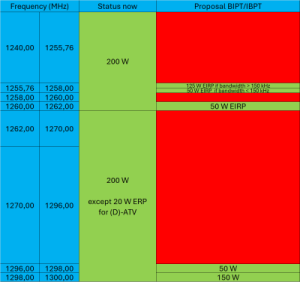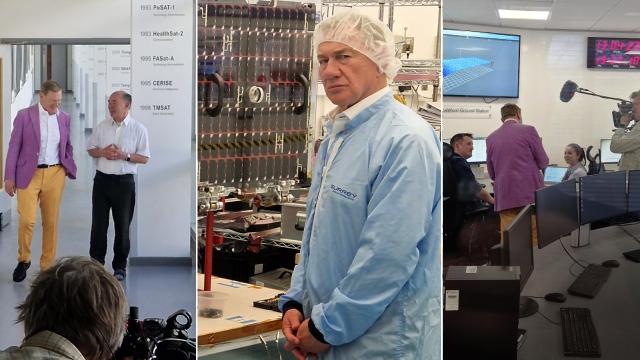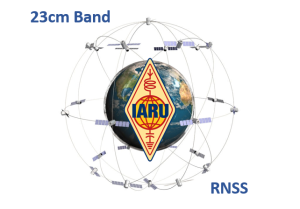On Saturday, May 11, 2024, Gopan VO1/M0XUU (VU3HPF) succeeded in making the first contact from North America through the amateur radio QO-100 geostationary satellite transponder located at 26° East.
Gopan was in Newfoundland which is just outside the coverage area of QO-100, the elevation at Signal Hill at St. Johns is below the horizon at -0.9°.
He used FT-8 to have a trans-atlantic contact with David G0MRF in south-west London. David reported it was tough going with a lot of QSB.
Gopan will be in Newfoundland until May 15.
In a post on X Gopan reported his signal into QO-100 was not strong enough to permit SSB operation.
The transmit equipment Gopan used comprised, ICOM IC-705 with 2.4 GHz Up-converter from DX Patrol, feeding a homemade 2.4 GHz amplifier delivering 10 watts output to a Helix 2.5 turn YATT design.
The receive side comprised a homemade 10 GHz Down-converter was based on a design by David G0MRF, a modified LNB all controlled by a Leo Bodnar M0XER GPSDO.
The dish was an 80 cm offset.
The software used was SDR Console and Airspy for setting up the station and MSHV in standard mode for FT8/FT4.
After his initial contact with David G0MRF, Gopan went on the work several other stations including Sadan TA4SO in Turkey.
David G0MRF will be joining Graham G3VZV on a QO-100 Dxpedition to Newfoundland from May 15-19.
They are taking enough equipment to enable transmissions on QO-100 using SSB / CW / FT8 / FT4 / Digital Amateur Television (DATV).
A video of the presentation ‘Making QO-100 contacts from North America – A new challenge’, given by Graham G3VZV at the 2022 AMSAT-UK Colloquium can be seen at
https://amsat-uk.org/2022/11/01/making-qo-100-contacts-from-north-america-a-new-challenge/
AMSAT-UK issue a special Certificate of Achievement for QO-100 contacts made from North America. Applications should be sent to awards@amsat-uk.org
Full details of the award in this Word Document
Gopan M0XUU – https://X.com/vu3hpf
David G0MRF – https://X.com/g0mrf
Graham G3VZV – https://X.com/G3VZV
Stefan VE4SW reports he will be traveling to Newfoundland and will be using the callsign VO100QO on QO-100 from May 13-17, he writes:
“VO100QO a special callsign for the activation of QO-100 from St John’s in Newfoundland will be used by the “Amateur Radio Satellites and Systems – Canada” Association starting Monday, May 13, at Signal Hill or another suitable location (weather permitting). Canadian amateur radio operators Stefan Wagener VE4SW and John Langille VE1CWJ will use a 1.8m dish and up to 100W on SSB to reach QO-100 at -1 degree elevation.
We invite all stations and operators in or near St John’s to join us in person and be part of the story. We will operate from Monday, May 13th to Friday, May 17th (weather permitting). Contact VE4SW (email on my QRZ page) for local information and timing.
The “Amateur Radio Satellites and Systems—Canada” Association will issue special certificates for successful contacts, and all QSOs will be logged into LoTW. Please see our “VO100QO” QRZ page for updates starting Sunday, May 12.
We would very much like to acknowledge the support of “DX Patrol” in Portugal (https://dxpatrol.pt) and António Matias for his support. We will use the DX Patrol QO-100 Groundstation V2 and other equipment for our attempt!”
Follow Stefan VE4SW on X – https://X.com/StefanWagener3
Information on QO-100 is at https://forum.amsat-dl.org/index.php?board/3-qo-100-es-hail-2-p4-a/










You must be logged in to post a comment.